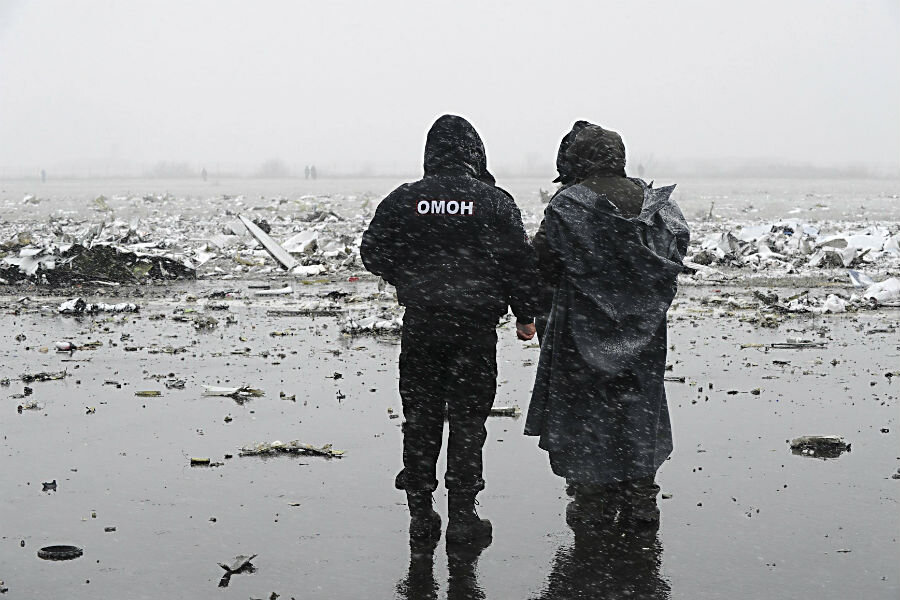Flydubai flight crashes in Russia: Was wind shear to blame?
Loading...
A Boeing 737 passenger jet flying from Dubai to southern Russia crashed Saturday as it made a second attempt to land during high winds, killing all 62 people on board.
There are conflicting reports as to what exactly happened, with some suggesting the plane nose-dived on approach, and others saying its wing clipped the ground upon landing.
While it is still too early to be certain what caused the crash, a likely culprit seems to be wind shear or a “microburst”, a weather phenomenon that has brought down many aircraft over the decades – but far fewer in recent years, now that both planes and airports often have advanced warning systems.
“Our primary concern is for the passengers and crew involved at this tragic time. Everyone in our company is in deep shock and our hearts go out to all loved ones of those involved,” said Flydubai CEO Ghaith Al Gaith, in a statement.
Both flight recorders have been recovered undamaged, and experts from the United Arab Emirates, United States and France are all en route to assist with the investigation, according to the Interstate Aviation Committee, Russia's civil aviation authority.
Ian Petchenik, a spokesman for the flight-tracking website Flightradar24, told The Associated Press that the FlyDubai plane missed its approach, then entered a holding pattern, circling for about two hours before making another landing attempt at Rostov-on-Don airport. It said a Russian Aeroflot plane scheduled to land around the same time made three landing attempts but then diverted to another airport.
"By all appearances, the cause of the air crash was the strongly gusting wind, approaching a hurricane level," said Rostov regional Gov. Vasily Golubev.
One of the prevalent theories being put forward to explain the tragedy, whether the plane entered a sudden dive, or clipped a wing as it landed, has to do with these high winds - specifically wind shear.
“Windshear is a generic term referring to any rapidly changing wind currents,” according to NASA. “A type of weather phenomenon called "microbursts" can produce extremely strong windshear, posing great danger to aircraft. These are local, short-lived downdrafts that radiate outward as they rush toward the ground.”
Now an accepted part of weather science, the idea of these downbursts, when first hypothesized in a 1977 scientific paper, met with disbelief and condemnation.
This study, conducted by Dr. Theodore Fujita of the University of Chicago and Dr. Horace Byers, was precipitated by the crash of an airliner at New York’s JFK airport, killing 113 people.
In the decades since, as more flights became victims of these microbursts, providing increasing evidence in support of Byers and Fujita’s theory, the scientific community gradually rallied round and began researching methods of mitigation.
Today, the Federal Aviation Administration (FAA) provides wind shear training, airports have the option of installing wind shear detection systems, and some planes have predictive systems that provide pilots with up to 40 seconds’ warning of a microburst ahead.
It is unclear as to whether Rostov-on-Don airport had any such systems in place, but Boeing 737s – the plane model involved in this latest accident – certainly do have the ability to carry PWS (predictive windshear system).
Alexander Neradko, head of the Russian state civil aviation agency, Rosaviatsiya, said it was up to the pilot to decide if weather conditions allowed the landing and said that traffic controllers in Rostov-on-Don acted in line with standard instructions, the Associated Press reported.
Whatever the case, if it emerges that wind shear did play a part, it will likely add to the chorus urging greater global investment in methods of mitigation.








